September-October 2002
A Whole New World
Sr. Fidelis Ong PDDM has worked as a missionary in Taiwan for many years. In her first few months inTaiwan, Sr. Fidelis had a difficult time adjusting to the culture and the people, like any missionary. In the university where she studied the Mandarin language, she found the students to be indifferent. “I wanted to make friends with them but they hardly ever smiled,” said Sr. Fidelis.
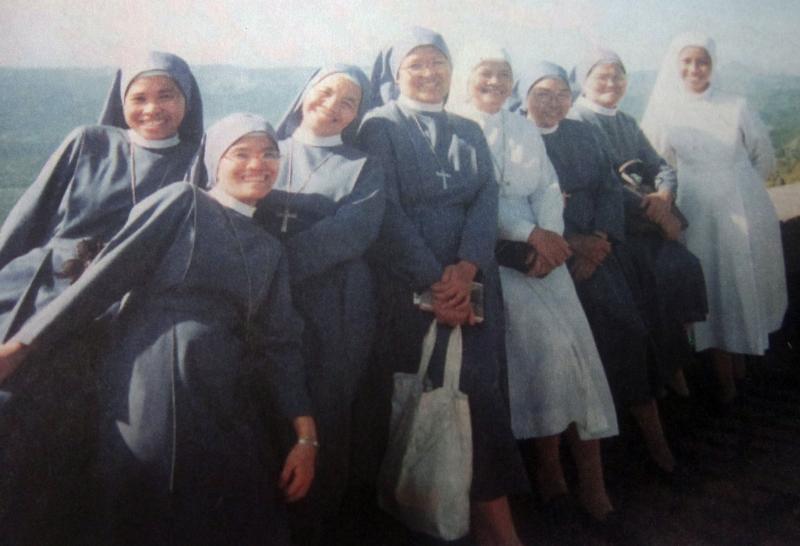
What she did the next time she went to school was to take extra effort and smiled gently, with a slight bow of her head, to the students. She did this everyday until one day she was surprised to see these students smiling back at her. This was the beginning of their friendship.
“This may seem one very simple experience, but for me, as a missionary, it made my whole world new.”
P.S. Sr.Fidelis is now back in the Philippines, doing liturgical apostolate.
Back To The Philippines
By Fr Michael Cuddigan MSSC

I was the second of the four children, our eldest became a Poor Clare Colettine contemplative nun. Two boys, who went on to be a doctor and a lawyer, followed me. We were a close-knit family, doing many things together but not involved in any of the town social activities. But I could recall my mother always talking about the hungry children in Africa.
The value of frequent visits to the Blessed Sacrament, the Holy Rosary and the Mass were very much part of my growing up. While going through secondary school, two other options were in my mind: ship’s radio officer or engineer. In my final year I decided that I wanted to become a priest, my way of expressing gratitude to God for all His love for me. Having a Columban uncle, Michael Cuddigan who was then serving as a Columban in Australia, was a deciding factor – though he never tried to influence me. My model of priesthood was very much that of the local priests. Television was not long in. I can’t say I had any clear idea what being a missionary was all about but I never had any attraction to serve at home, always abroad.
Endurance
Seminary days were more a time of endurance than anything else. I think it gave me some general formation and increased my awareness of the permanence of priestly commitment. The Columban Fathers have been more than generous facilitating my studies over the years. As I have grown as a person at all levels new forms and possibilities of ministries have shown themselves to me. This has kept the excitement alive in my life.
Discovering my gifts
From 1971 to 1983 I was assigned in the Philippines and was basically parish-based. During this time I had direct responsibility for hospital and college ministry. In my later years here, there was a growing awareness of my giftedness in the area of spiritual direction and retreat ministry. While enjoying general parish work, spiritual direction gave me a lot of personal fulfillment because it enabled me to use my full creativity as a person. The early years were ones of slowly being enculturated into the Philippines and learning a whole new way of life and identity as a person and as a missionary. I left Philippines in 1983 for a new assignment in Australia and then New Zealand. It was unexpected and yet affirming. It was a time of refreshment for me. After that, I was assigned for five years in Ireland – those were wonderful years of re-bonding with my family and old friends.
Back to Mindanao
After nearly a ten-year absence, I came back to Mindanao. I have been on vocation ministry and directed retreats since my return. My first year back was quite difficult, with family bereavement, on top of my recovering the language with feelings of vulnerability back in a foreign culture. I had changed personally and ministerially, as had also the local culture. So it was a time of much personal adjustment and integration.
Major changes were obvious in the Columban scene from being needed to one of vulnerability, of decreasing numbers and the ageing factor. The local Church now has the ever-increasing ability to care for itself, unlike when I was here many years ago. The future of our presence here is very much an open question. Are we like Abraham at the end of a journey and maybe able to sense what the future has in store but also aware that it is out of our hands, except maybe to facilitate the passage of the younger members? Regardless of my future here I am glad that I returned and remained open to whatever God offers me here or elsewhere.
Blackie Goes To Mass
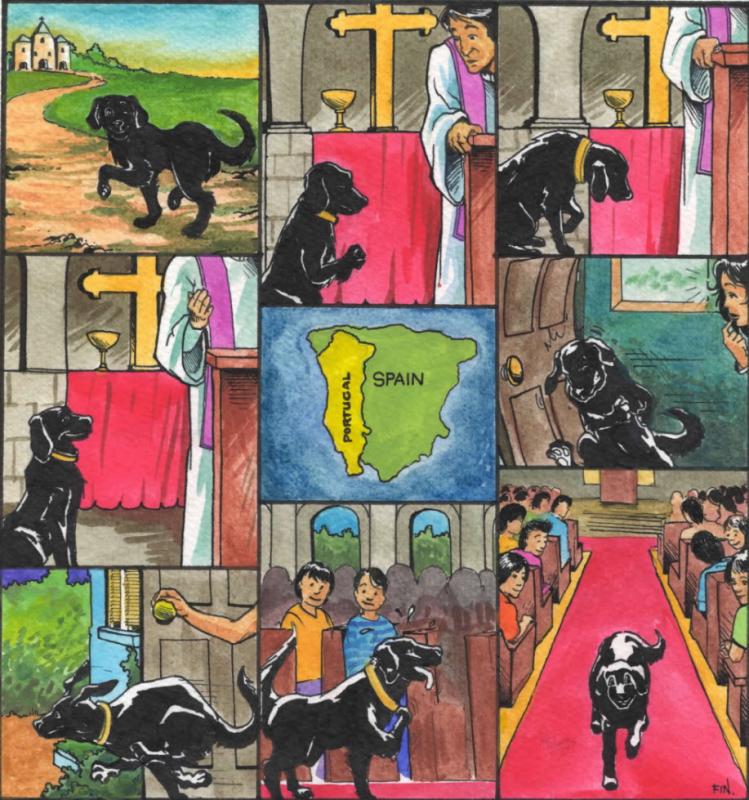
From Portugal comes the tale of a dog which walks 16 miles every Sunday morning to attend Mass at 7:30 am. Nothing so extraordinary about that except that she usually does it on her own. Preta, or Blackie in English, has created a sensation among the locals in and around Sobrado, near Oporto. Crowds now gather to see her at St. Rita’s Church in Ermesinde, where she apparently lies down near the altar and rises and sits with the congregation. Her owner, Maria do Ceu, is as mystified as everyone else. “One Saturday night, we kept her locked indoors,” says Maria. “At about 5:00 am she began scratching at the door and howling to be let out. As soon as we opened the door, she charged off in the direction of Ermesinde.” Just goes to show you can’t keep a good dog down.
Salamat sa THE TABLET
Could I Bring My Rubber Shoes?
By Sr Eva Calingo CM
“What? Eva is entering the convent? Carmelite?” These were just a few of the surprised reactions of my family and friends when they learned about my decision. I expected it. You see, I am the youngest in the family, which I think explains the independent and carefree streak in me. Above all, I loved wearing jeans and rubbers shoes.

My decision to join the Carmelite Missionaries was made years after I felt the first stirrings of attraction to serve the Lord as a religious. I was then a student in a university in Manila. I said, “Later on, Lord. Let me finish my studies first.” I did. But I said again, “Later, Lord. I want to have a job first and enjoy my life.” I worked for three years and enjoyed. But all those years, there was something lacking. An unexplainable, indescribable emptiness was there, an emptiness and restlessness that no friends, job or money could fill. It was then that I paid serious attention to His call.
I knew it when I found it
“Which way, Lord? Show me.” This was my prayer then. I was attracted to the prayer life of Carmeland the only Carmelites I knew then were the cloistered nuns. But I was also interested in missionary life. The latter won. Can you imagine my joy when I learned about the Carmelite Monasteries? It was my wildest dream come true. I learned about them through the television. It was Holy Saturday of 1986 and usually there were no programs on television. I was surprised to find one, and did not get up from my seat until it was over. I jubilantly told myself, “I found it!”
Mother’s blessing
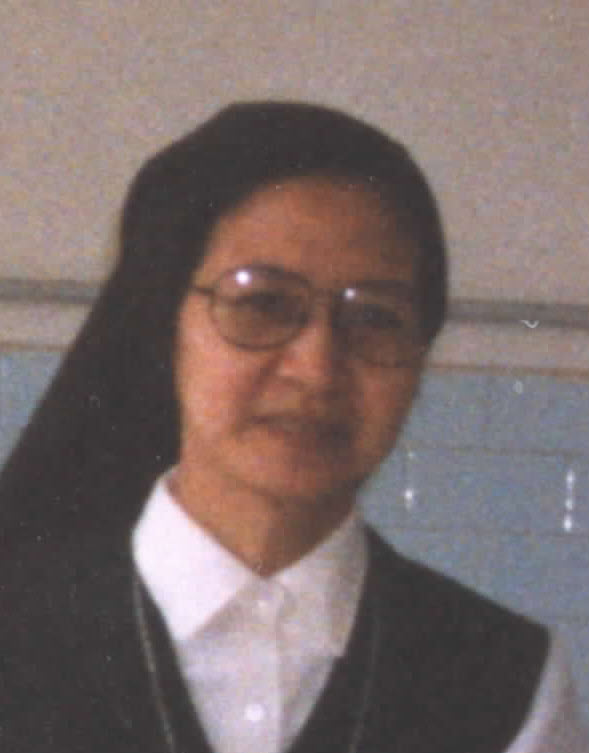 Attending the monthly search-ins with the Carmelite Missionaries was something I was looking forward to, but at the same time I dreaded it. I felt so alone since I was unable to say anything about it to the persons closest to me – my family, my mother particularly. They were the first ones who taught me how to love God and my neighbors, but I was afraid to tell them because they might not like the idea. However when the time for the week-long Aspirant’s Encounter came, I could not do anything anymore but tell my mother. My mother cried and it broke my heart. But I was glad that she let me decide for myself. She gave me her blessing.
Attending the monthly search-ins with the Carmelite Missionaries was something I was looking forward to, but at the same time I dreaded it. I felt so alone since I was unable to say anything about it to the persons closest to me – my family, my mother particularly. They were the first ones who taught me how to love God and my neighbors, but I was afraid to tell them because they might not like the idea. However when the time for the week-long Aspirant’s Encounter came, I could not do anything anymore but tell my mother. My mother cried and it broke my heart. But I was glad that she let me decide for myself. She gave me her blessing.
Rubber shoes
When I was about to join the Carmelites, there was a kind of “division” in the family: some were in favor of me becoming a nun, some were not. But I was sure of myself and I knew that my family loves me and will support me in my decision. While I was packing the few things I had to bring and when I was about to put my rubber shoes inside my bag, I suddenly hesitated and wondered, “Do nuns wear rubber shoes?” I picked up the telephone and called the Sister in the Postulants’ Community. “Sister, could I bring my rubber shoes?”
Something more
The road to missionary life is not easy, but the joys are incomparable. We are formed for mission to serve the Church. And as the years went by, I learned from experience that it is not really how I want to serve the Lord that matters, but what He wants of me. At present, I am working here in Rome at the General Secretariat, in our General House. And I tell you, it’s all worth it – to leave everything behind even if it hurts, to offer your life to the Lord and say yes to Him, not just once but everyday, moment by moment.
Yes, it’s all worth it. Even if very seldom do I wear my rubber shoes now.
Friends of St. Francis
By Fr Francis Carey MSSC
St. Francis is the patron saint of animal lovers, after all he even preached to the birds. So MalateChurch in Manila holds a special blessing for animals on the Feast of St. Francis which gives Fr. Francis Carey the opportunity to talk about the wider issue of caring for the earth.
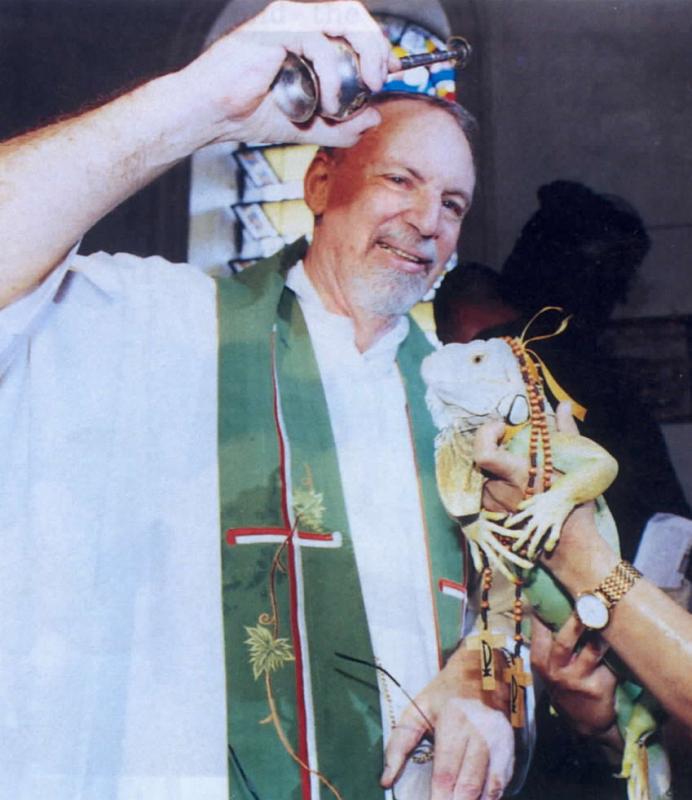
Pythons, lizards and spiders are among the pets that people in the Philippines brings for a blessing every year on the feast of St. Francis of Assisi. They also bring birds, a horse or two, a sheep and some goats. However, dogs and cats are by far the most popular. The Philippine Daily Inquirer reported that there were at least 100 animals, including sheep, rabbits, parrots and a hedgehog. A group of men dragged in a donkey and a small boy brought a fish in a glass bowl. One woman brought along her iguana for a blessing. He was a tranquil pet and never moved during the whole ceremony.
Over the last years when we have had the blessing of animals in the parish, mostly middle class people have brought along their animals. They are wealthy enough to own purebred cats and dogs that ordinary people could not afford to keep. Children from squatter areas also come along to bring with them any stray cats they can find. It is an occasion for everyone who loves animals to come together.
Zoo inside the church
The first time we had the blessing there was chaos in the church. The church filled up with people and animals at 9:00 am on the first Sunday in October. It was a miracle that in spite of all the barking, yapping and hissing the people showed kindness and consideration to each other and did their best to calm their pets. Churchgoers who attended Mass stayed on to gawk at the animals, as a picturesque stone church began to smell and sound like a zoo. There were always new faces in the congregation but several people show up faithfully every year with their pets.
Care for the earth
Now we have to procession out into the garden beside the church. All gather around outside for the blessing. It is an occasion to call attention to concern for the whole of creation. We promote the Care for the Earth programme. It is advertised widely on the net, radio and TV, and the response to it has grown over the last few years. Many who are interested in animal welfare have worked hard to publicize what we are doing. An animal welfare expert offers advice to pet lovers. Before and after the Mass in Malate Church there are stalls offering naturally grown vegetables and herbs for sale.
Endangered Species
There are hardly any wild birds in the Philippines now. In Manila I have seen a crow, a sparrow, a myna bird and possibly a pigeon in the garden. The Philippines used to have more birds thanAustralia.
In caring for pets we hope to raise the consciousness of people generally about the need to respect and protect all animal life. Perhaps in doing that we will grow in our appreciation of all the animals and plants that are part of the creation.
Salamat sa THE FAR EAST
In The Hills Of Peru
By Ariel Presbitero
The Fiesta of Señor de los Milagros is a very popular devotion in Peru. Every year, Peru is celebrating it like Lent so you could see people wearing purple, rich or poor, to commemorate this great devotion to a painting made by a black Peruvian slave. It is a painting of Jesus on the cross with the Blessed Mother, Mary and Mary Magdalene on both sides, God the Father on top of the cross with a dove, which symbolizes the Holy Spirit. This painting survived the big earthquake inPeru and people believed that many were healed through this painting. They even said that it is still making miracles up to the present.
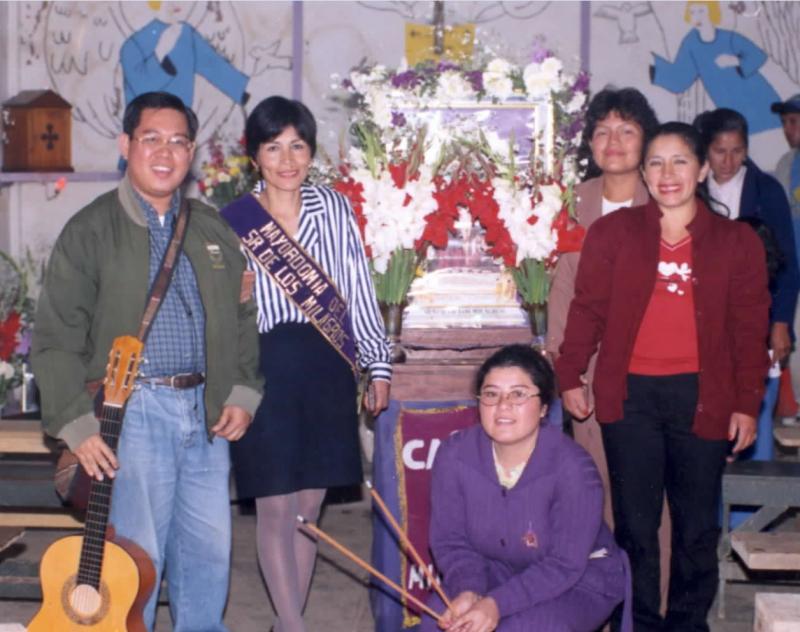
This year’s celebration of the Fiesta of Señor de los Milagros went well. It was a day of praise and thanksgiving. We were able to visit all the eight communities where we had evening novenas from house to house. It culminated with the Mass and the procession.
We all enjoyed walking and singing for half a day. At 12:00 noon, right after the Mass, we left the chapel and went up to the farthest end of the parish. We went through stones and dust; people carried the image of Señor de los Milagros while I played the guitar.
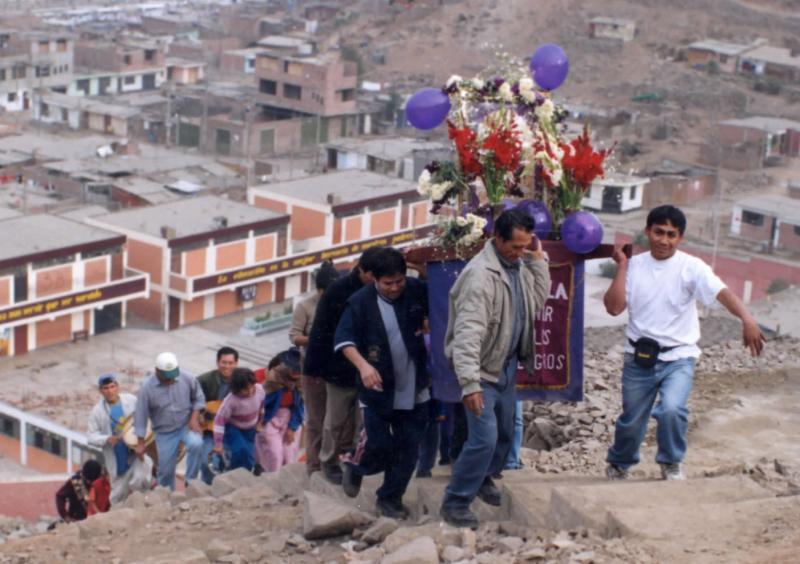
Energy drain
Going up and down the rocky and dusty hills was tiring. But the energy and enthusiasm of the people were like drops of rain during summer for me. I saw a young mother who didn’t even mind carrying her baby all throughout the procession – this gave me the energy to go on myself. It was also a great satisfaction when we reached the top of the hill and looked down and saw the whole place, the long and winding, uphill road we had passed.
Peruvian hospitality
The reception of the people was very welcoming and appreciative. In each stop they offered some drink like “chica”, a corn wine, or the local softdrink called Inca Cola.
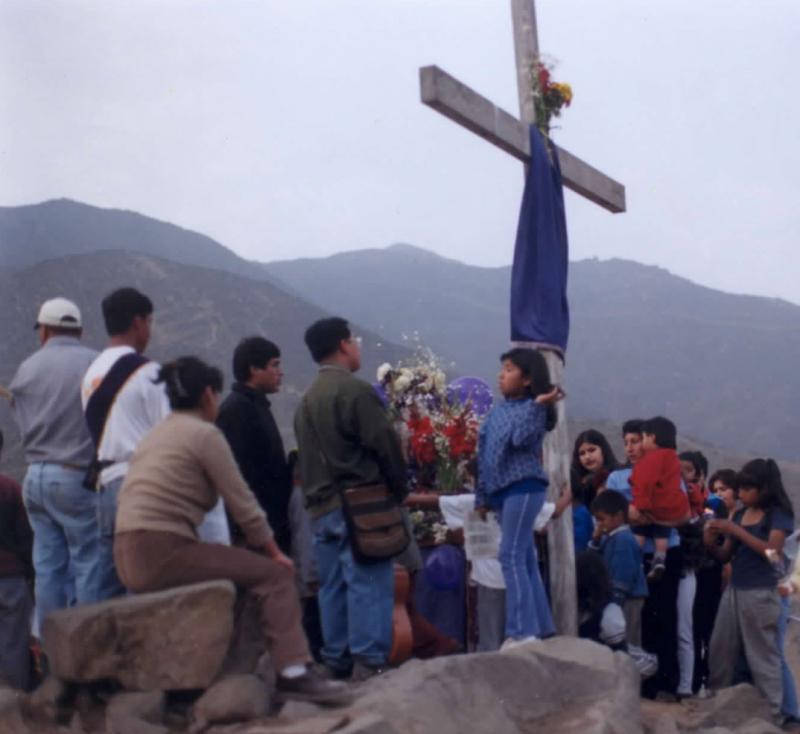
We finished at 7:00 pm and we had a very nice meal prepared by the mayordoma this year. They were “papa de huancaina”, potato with a very special cream, “escabeche de pato”, then rice, of course for me, and “carapulcra”, a very common food during fiesta because it is easy to prepare, with potatoes sliced in small pieces and mixed with tomato sauce and meat.
Church’s presence
In this event, I got to know more of the people. And they got to feel more comfortable with my presence. Since it is in the farthest hillside of the parish, the people in this new community seldom get a visit from the parish priest or ministers. I hope that in some way my presence here could enliven their faith.
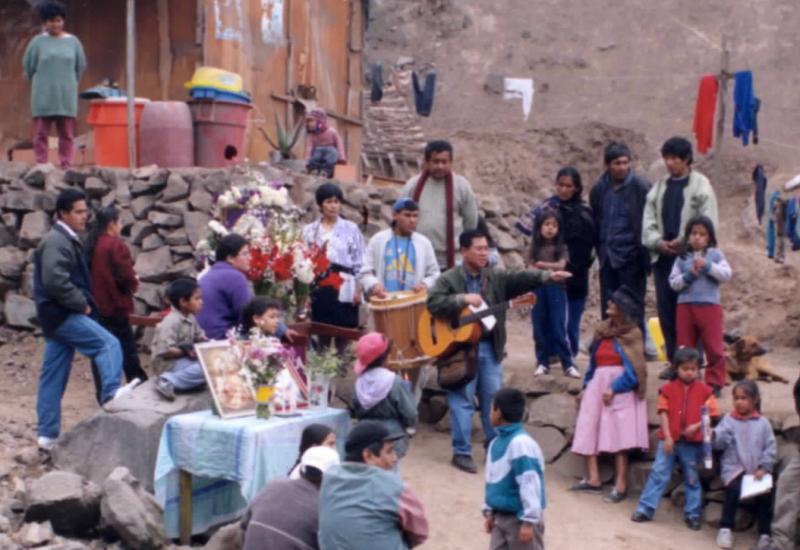
Where I start
I’m already more than one year in the parish now. I’m slowly getting to know the people and getting things organized according to their phase. The challenge here is how to get them to attend meetings or liturgies because what most people here worry about is how to provide for their children. What I do is always visit them in their homes to get to know them and check how they are doing. For me this is one way of building the Church – starting from the basic unit of the society which is the family.
Land Of Islands
By Fr. Nilo Resco MSP
I am an MSP missionary in the Solomon Islands, a country of islands that lies in the southwestern part of the Pacific region. To get from one island to another, one has to brave the sea by boat or dinghy. Solomon Islands is inhabited by people called Melanesians. They used to be called “natives” before but the Legislative Assembly changed this to Islanders in 1974, as the word “natives” had colonial and racist overtones.
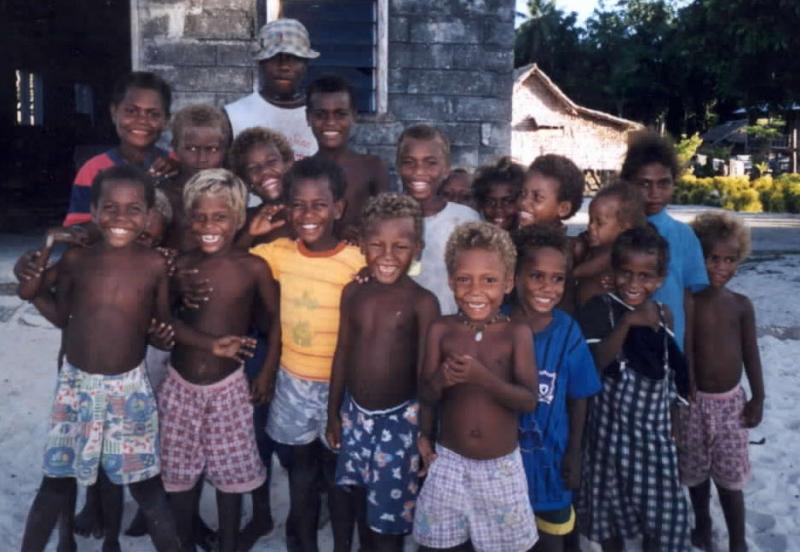
I am assigned at Takwa Mission Station under the Diocese of Auki, in the island of Malaita province. Under my care are more or less 6,000 Roman Catholics scattered in 32 islands and bush villages. In several cases, there are ten or less Catholic families in an entire village and the rest are under different denominations. I can only visit Catholics outside Takwa mission station a few times a year because of the vastness and ruggedness of the area under my parish, which makes travel difficult and expensive. The local catechists are my precious helpers. They keep the Christian life in the villages alive. Having the advantage of a more accurate knowledge of the local language and of their fellows, they are able to succeed where the missionaries might easily fail.
Whenever I am needed
Most villages are located along the seashore, that is why dinghy is the most practical means of transportation. Once in a while I sail out in the waters with my catechists whenever my ministry needs me. Village visitations that last for about a week may mean a journey on foot over small paths going to the bush villages on traveling by dinghy to the island villages on rough seas, especially during rainy season.

Man-made islets
But what really impressed me when I set foot on my mission station is the scenic beauty of its stalls and lagoons that are the delights of most of the photographers. What is more amazing is that people build their own artificial islands. In my parish alone there are about eight or nine islets made by the hard labor of the saltwater people of the lagoon. The islets in which they live have been enlarged manually by using stones and corals from the sea. From a distance, they look like fortresses.
A missionary here in Solomon Islands must master the local language of the villagers if they were to understand and be understood. Aside from the malaria that they have to deal with, one should learn from these saltwater people the hazards of reefs and islets. And most of all one must know the realities of sailing, paddling the dinghy between reefs, winds and waves, sky and frigate birds, treacherous currents and must know how to save oneself if worse comes to worst during sea travel. Such elements would become a revelation awaiting the interested missionaries in Malaita. Anyone?
Land Without Language Is No Land At All
By Ernie C. Turla
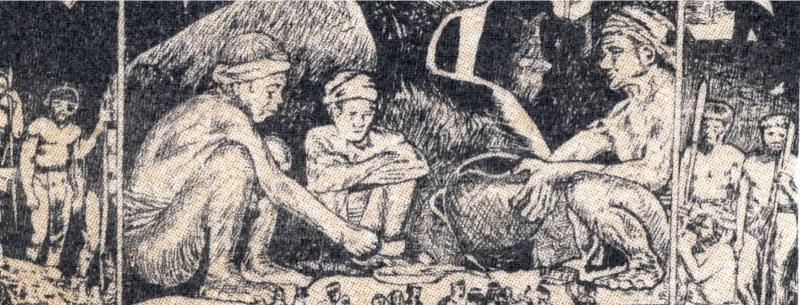
Our languages in the Philippines, except of course for Tagalog, have been on the verge of deterioration for the past half a century or so. Not because people don’t want to use them, but because they have been relegated to the background in the country’s vision to have a united people speaking a national language based on one of the major ones. What has happened is that, instead of uniting the peoples, this phrase of the Constitution even created an estrangement among the many ethnolinguistic groups (excluding the new generation who have been, according to some experts, brainwashed and with little hope for a reversal of attitude) who suddenly realized that their indigenous languages were being grossly neglected and on their way to possible extinction.
Death of native tongue
For the speakers of various vernaculars are being made to be like the proverbial lemmings impulsively marching into the sea of death, and if the pattern of their fatal journey is not stopped on time, the next century would find all their progeny devoid of their native languages, as well as the culture such languages are embedded in. Then there wouldn’t be any Kapampangan, Cebuano, Ilonggo, Karay-a, Aklanon, Bikolano, Pangasinan and Ilokano-speaking peoples anymore. With the advent of modern technology and sophisticated communication systems, the time frame for their demise could even be shorter. Of course, by that time, who would still care for such languages, given the indoctrination our youth are receiving today from our great educational institutions, starting from kindergarten through graduate school? Their feelings won’t for sure be the same as ours, the flame of our present pride for such languages having withered in their hearts completely in the years before that. As planned and designed as such, they would be using only one language – a language they did not inherit from their parents or from the region they were from, but from the schools that inculcated it to them.
Out of place
“The others”, as I refer to the seven other major languages, don’t get promoted by the National Language Commission, and so don’t get an equal change in language propagation. Their speakers are denied the right to learn them even on their own turf. As early as the tender age of six, when the child has not even developed a full vocabulary of his own native language, much less developed any love or loyalty to it, he is already formally exposed to other languages, Tagalog in particular. As a result of this, he is able to write in Tagalog and in English, but not in his own language. And then to cap the wanton mockery, it is in college where he is given the option to take Cebuano, Ilocano or Kapampangan as a course along with Spanish and other foreign languages, and at that stage of life he already probably can deliver an eloquent speech in Tagalog, while he is just starting in his study of his own language! How pathetic! “The others” have really fallen from grace with their indigenous speakers. Right in their own region they lose credibility and respect. Right in their own domain they are shoved and made to feel out of place. This policy is repugnant to fairness, and is an insult to the pride of the minority peoples.
Sad History
We need “die-hards” – those with fiery determination to help check this injustice subjected upon the entire non-Tagalog regions of the Philippines. We need legislators who believe in preserving language diversity, or cultural diversity – those who think that one language should not be enhanced and promoted at the expense of “the others” which go closer and closer to the brink of extinction. Looking into the future in a crystal ball, we see our own native languages in museums and in historical archives, well preserved – no doubt about that, like the works of taxidermists displayed for all the world to see. Still living and breathing the fresh air in their native regions? No, they are now dead languages preserved like prize souvenirs by the same hunters that had killed them with no mercy, as dead as the head trophy of a deer nailed on the wall above your fireplace. They used to be vibrant and brimming with life and enjoying their proud existence in the tongues of their speakers. But now they’re gone and are now just relics showcased in an exposition enter – a despicable proof of just how society in its ambitious effort to promote one language at the expense of “the others” could be so insensitive in its ways. And would linguists try to revive them like what they have done recently to Hebrew and Latin? With not as much historical significance as those two, our languages, once lost, won’t ever be revived. They would forever be history. And their story would end with the line, “And so it came to pass… that out of more than a hundred languages in the Philippine archipelago, at least one has heroically survived, thanks to the noble efforts of the National Language Commission and the Department of Education.”
Take your part
Now let’s go back to the present time and give this issue much thought. Do you want to save that language inherent in you, or don’t you care if it’s going to slip away? Are you the type of person who would instigate a rally to lionize it and be lauded as the champion of its triumph in surviving?
If you want it to become immortal like the ever-continuing existence of humanity on earth, be a part of DILA (Defenders of Indigenous Languages of the Archipelago) and participate in its discussions, conferences and workshops. It needs your unwavering support in its strife to accomplish monumental aspiration only regional nationalists like we can initiate. As its founder and acting moderator, I can assure you with pride and candor that you will be amidst a gathering of intellectual giants and luminaries, many of whom are pillars in their own fields. We have noted linguists and historians, professors and educators, computer experts and webmasters. We have vernacular poets, newspaper columnists, as well as authors of dictionaries, of a Philippine history book, of a Palanca-winning novel, of a book containing thought-provoking essays such as Ethnic Cleansing and Manila Colonialism, and of a soon-to-come-out book entitled, A Nation of Our Own. We have an illustrious painter who is also a host of a local radio program, an English literature professor, a promising student in linguistics, a mathematics teacher, a former school district supervisor, a former PNB manager and even a brain surgeon. And what’s more, we also have Americans and a host of other knowledgeable foreigners who have joined our bandwagon to help fight for our cause. These people, despite their differences in background and life endeavor, all share a common characteristic: a passion for languages, and specifically a strong commitment and sterling dedication to help protect such languages from decadence and eventual extinction. And our indomitable spirit, along with our pride, our hopes and sense of loyalty, is what holds us together and is the mainstay that unites us in this dream.
Hand in hand
Now going back to the main topic, let me emphasize that the crying need of the hour, as members of this group, is to put all our resources together and surge onward in our relentless struggles for reforms in language policy. It’s now or never. If nothing is done during this century, the winds of change will blow all our languages away, and the castles of our cultures too will be blown. That’s how doomed our indigenous languages are in the present situation they are in. While our fellow native speakers are either being happy-go-lucky in their attitude or are busy with their daily lives or just leisurely basking in the sun obviously oblivious of what is going on, and our own provincial boards and congressmen concentrate on other matters, maybe economic or political, the health and lives of our minority languages hang in the balance and are at stake. We just can’t wait for them to reach a moribund state like the indigenous languages in other parts of the world especially in North Americawhere there are now only a handful of speakers left to perpetuate the existence of their languages. To many, the scenario looks like the last picture show for their dying languages – and their culture. Of 6,000 languages now still spoken worldwide, more than half are predicted to sing their swan songs during this century.
Mission Is Alive And Well
By the Editor, Fr Niall O’Brien
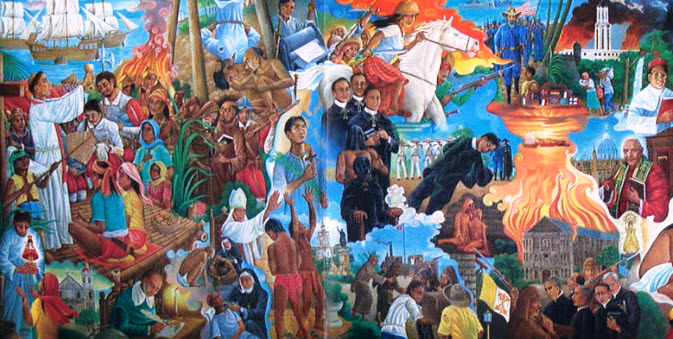
One of the dreams I had when I was a student in St. Columban’s Seminary was a picture of myself on horse back riding over distant hills as I brought the Mass and the sacraments to people who had not had a priest for years. Dreams come true because that was exactly what I did and enjoyed so much in my first few years in the island of Negros in the Philippines. And indeed in some parts of the world, missionary priests are still doing precisely that, though in the island of Negros now young Filipino priests have taken over, roads have been built and the scene has quite changed.
Justified revolution
It changed for me too when, almost by accident, I went to live on a sugar plantation as chaplain to a retreat house. On that plantation I saw conditions, which called to my mind what Ireland must have been like just before the famine of 1845. I was profoundly disturbed and I soon realized that being a missionary involved getting stuck in and confronting situations of injustice; but how should we go about it? Some of my friends felt that this was a case where a revolution by the people was justified and indeed we were aware of groups who already had taken up arms. At one level I could see the reasonableness of this decision; after all it had been alright for the French to do it in 1789 and for the Americans to do it in 1776 and for the Irish to do it in 1916 so why not for the Filipinos in the 1970’s. But then I was a missionary bringing the name and message of Christ…would he have taken up arms in this situation?
Active nonviolence
This was a dilemma, but I was helped no end by people like Gandhi, Martin Luther King and Daniel Berrigan, the American Jesuit who along with Thomas Merton was writing precisely on this problem. All of these were acutely aware of the sort of unjust situation, which existed in the Philippines, but their solution was unique. It was active nonviolence. That meant not that they were passive in the face of violence but rather that they opposed it with all their hearts but always by using nonviolent means. In fact I soon learned that active nonviolence was much more than a passion but it was a science, which must be studied and learned, and that genuine religion could play a very important part in it, as Gandhi and Martin Luther King had demonstrated. Suddenly the Mass and the Sacrament, which for a while had begun to pale in importance in my mind beside the great challenge of injustice, became more relevant than ever. Not only were they a support to our drooping spirits but some of the sacraments specifically reinforced the thrust for peace based on justice. By Baptism, for example, we join the Church of the poor and take their side in the struggle to build the Kingdom of Justice. Confirmation, among other things, is our public commitment to work for a just and peace-filled world and the Mass becomes the moment when we sacrifice ourselves with Christ to bring about a world where the lion will lie down with the lamb. In other words I found no conflict between my original dream and the dramatic circumstance, which I now found myself in. They worked together and if I separated them, I knew I would be in trouble.
Essence of Peace
I once got a computer print-out of all the places that the word “peace” appears in the New Testament. I could hardly believe my eyes at the length of quotations that the machine printed out. “Peace”, of course, in the New Testament does not just refer to the absence of war but rather the presence of that harmony which comes from people and peoples learning to live together in justice and love. In other words: SHALOM. Working for this Shalom may not at times be as dramatic as demonstrating in the streets against injustice or riding over that hill to bring the Mass to faraway villages but is nonetheless at the heart of evangelization and the missionary vocation.
And this vocation is needed in our age as never before. We are mesmerized by e-mails and internet and cell phones the size of a watch and we forget that no other age has seen such unspeakable horrors and wars as ours…Bosnia, Rwanda, Sudan, Palestine, Ethiopia and Eritrea, Kosovo, Chechnya; the graph of violence seems to go up and up. Surely never before were missionaries so much needed to bring the Gospel of Peace.
Mother Teresa Says No To Death Penalty
By John Dear SJ
 In the spring of 1988, while I was teaching in Scranton, Philadelphia, the state officials announced that Pennsylvania would carry out its first execution in decades. People across the state, nearly all Christian, supported the scheduled murder. “What we need is someone like Mother Teresa to intervene for us,” I said to a friend, a monsignor who worked at the diocesan office. “Not many people know this,” he confided, “but I’ve led several annual retreats for her. I’m sure she would help.”
In the spring of 1988, while I was teaching in Scranton, Philadelphia, the state officials announced that Pennsylvania would carry out its first execution in decades. People across the state, nearly all Christian, supported the scheduled murder. “What we need is someone like Mother Teresa to intervene for us,” I said to a friend, a monsignor who worked at the diocesan office. “Not many people know this,” he confided, “but I’ve led several annual retreats for her. I’m sure she would help.”
Saintly interventions
I called the office of the Governor, a widely respected Catholic, and asked if he would receive an appeal from Mother Teresa on behalf of the condemned man. One day before I was going to contact Mother Teresa, a stay of execution was granted. Over the next few years, I arranged Mother Teresa’s intervention on behalf of death row inmates on eight occasions. Each time, she eagerly offered her support and the prayers of her community in an effort to stop killing and end the death penalty.
In early 1990, while I was studying at the Jesuit School of Theology in Berkeley, the State of California was preparing to execute Robert Harris, who had brutally murdered two young brothers earlier in San Diego. While no one supported his unimaginable violence, and while my friends and I wished only for healing and peace for his victims’ family, we did not want the killing to continue. Many friends organized demonstrations, vigils, letter-writing campaigns, lobbying efforts and prayer services in an effort to stop the murder of Robert Harris.
Over the private line
 I called the monsignor. “Do you think Mother Teresa would be willing to help us? And if so, how can I reach her?” “Of course she would want to help,” he replied. “Here’s her private phone number. I will be praying for all of you.”
I called the monsignor. “Do you think Mother Teresa would be willing to help us? And if so, how can I reach her?” “Of course she would want to help,” he replied. “Here’s her private phone number. I will be praying for all of you.”
Nervous, I dialed the long number. Halfway around the world Mother Teresa picked up the phone in her office. “Hello,” she said in her heavy, unmistakable, Albanian-Indian accent. I introduced myself, told her the situation and asked if she would be willing to help us.
“What exactly did Robert Harris do?” she asked. I told her, then proposed that she speak with the Governor of California, George Deukmejian, by phone in the next few days before the execution and ask the clemency. “Yes I will,” she said, “and I will ask all the Sisters at the Motherhouse here inCalcutta to pray for the Governor.” She spoke of her visit a few years earlier to San Quentin’s death row. On the way out that day, she told the guard, “What you do to them, you do to God.”
What would Jesus do
I called Governor Deukmejian’s office and told them of Mother Teresa’s plan to call. On Monday evening, March 26, 1990, Mother Teresa spoke briefly with the Governor. I called her back immediately to find out what happened, intending, as she agreed, to announce her message to the 20 reporters gathered at the front door of our Jesuit house.
“Did you speak with the Governor?” I asked. “Yes. He started talking about how he had to do this, that this was the law.” “What did you say?” I asked. “I just said, ‘Do what Jesus would do.’”
No arguments. No statistics. No invocation of sin or immorality or injustice. No lecture. No angry denunciation. Just: “Do what Jesus would do.” She cut right into the heart of the matter. “That’s all I said. He talked again about how it was in the state’s hands, so I repeated what I said, ‘Do what Jesus would do if He were in your position.’”
Prayer brigade
“We have to pray,” she continued. “We all have to pray so that he gets the grace and the courage to do what Jesus would do. Pray hard. Get as many people to pray for courage for him. Get everyone in the country to pray. And then, we have to respond to his decision with love and compassion. And keep praying for the family of the victims, too.” She asked me to call her again with any news and promised to help anytime.
The next morning, The Los Angeles Times carried a cartoon depicting Mother Teresa in one corner, speaking on the phone saying, “Do what Jesus would do if Jesus was in your position,” and the Governor in the other corner, on the phone asking, “What would Pilate do if Pilate were in your position?” Miraculously, a California judge intervened a few days later and a stay was issued.
Only love
Two years passed. A new governor, Pete Wilson, who campaigned on a pledge to resume executions, set another date for Robert Harris. Most Californians supported his tough-on-crime stance. Despite eloquent opposition to the death penalty from the Pope, the US bishops and Mother Teresa, over 80% of all Catholics supported executing people. Again, Mother Teresa repeated her message. “Do what Jesus would do,” she said. Alas, Governor Wilson washed his hands of the case, and Harris was killed. I called her with the news. After expressing her grief, she said, “God sees only love. God sees the love that we put into what we do.” She thanked all those who tried to save his life.
My friend in death row
A year later I received an urgent call. My friend Billy Neal Moore, a death row inmate in Georgia whom I had visited and with whom I had corresponded for years, was to be executed in a few days. Billy had been on death row longer than anyone else up to that time. He and a friend got drunk one night, robbed a liquor store and killed its elderly owner. The next morning, he wept and begged forgiveness of his victim’s family. He spent his years on death row praying, studying the Scriptures and counseling other inmates in Jesus’ way of nonviolence.
I flew to Georgia to be with Billy. We organized prayer services, press conferences, demonstrations and vigils. Mother Teresa spoke on the phone to the chairperson of the Georgia Board of Pardon and Paroles, which has the power to grant clemency before an execution. Mother Teresa promised that her community would keep a running prayer vigil for clemency. Meanwhile, Billy sent a message from prison, urging us to be sure that we grant clemency in our hearts to all those who have personally hurt us. Otherwise, he said, we cannot expect the God of clemency to take us seriously and answer our prayer.
Clemency for the clement
Several hours before the scheduled execution, the victim’s family members appeared before the board and pleaded for Billy’s life, saying that killing him would not bring their relative back, nor would it end the killing or ease their pain. Forgiveness and clemency were the only way to healing.
In a historic, near-miraculous decision, clemency was granted. Several months later, Billy was quietly released from prison. Today, he ministers to prisoners and teaches Jesus’ way of love.
War against killing
Not long afterwards, I participated in a Plowshares anti-nuclear demonstration. My friends and I hammered briefly on an F-15E nuclear-capable jet, the kind used to drop bombs on Iraq. It was another way of trying to stop killing – this time the murder of our nation’s enemies. I then spent eight months in North California jails. Supportive letters came from many friends and relatives, but especially moving were the words of encouragement from Billy and Mother Teresa. “Be glad that you are to proclaim the love of Jesus even to the poor in prison,” she wrote. “Give Jesus your pain and limitation and trust in Him. In your weakness His power will be a protection and a strength.”
Woman with a big heart
In 1995, while in Rome, I met Mother Teresa at her Order’s headquarters. When I was introduced, she reached up and put her hands firmly on my cheeks and held them there for about 15 seconds, while she smiled and stared into my eyes. Then, she folded her arms, pretending to be stern with me, as if to reprimand me for doubting her and asked with suppressed chuckle, “What did I say they should do?” “You said they should do what Jesus would do,” I answered.
“And what did they do for your friend?” “They did what Jesus would do; they granted him clemency.”
“Thank God!” She said with an enormous smile. She was filled with joy at the thought of clemency. She asked about Billy and my work, and promised that her Sisters would pray for me for the rest of my life. That day in Rome, I felt tremendous love pouring from her. If love is all God sees, as Mother Teresa told me on the phone and later wrote me, then I’m sure that God saw her. Her entire spirit radiated unconditional love.
Our way out: love
Though she was famous for her compassion for the poor and her advocacy for the unborn, she was equally opposed to the death penalty and to war. How could she do otherwise, since she sought so passionately to practice the love of Jesus?
When I think of her now, I remember her voice and her simple, stunning wisdom, “Do what Jesus would do.” With these five words, Mother Teresa offers us a mantra, a practical solution, a way out of the world’s violence. She calls each of us – from governors and presidents to parents and churchgoers – to live out the love of God just as Jesus did. That means not only showing compassion to the poor and the needy, but speaking out against executions, bombing raids and nuclear threats. She wants us not just to read about Jesus, to think about Jesus, but to do the things that Jesus did.
Salamat sa AMERICA
Our Hideaway

It is our delight to introduce to you this new section in Misyon – Our Hideaway. A venue for the youth to express themselves and to share with our readers their mind, their heart and their soul. We are inviting you – students and young professionals – to drop by Our Hideaway and let us know how you are doing.
Joy

By Cathyne Alla Costales
Joy was a rape victim. I met her when I was in college. I was on my senior year of college then and she was a freshman. I first met her at the Negros Women’s Center where I was having my research for an article for our school paper. I was sitting on a couch in the lobby, too preoccupied with reading the materials I had gathered that I hardly noticed Joy sitting beside me. I gave her a smile seeing her in our school uniform, which I was not wearing at that time. Thinking that Joy was a cousin or daughter of one of the staff of Negros Women’s Center, I didn’t mind at all when she tried to take a peek at my materials. Before I knew it, Joy began telling me her story, and I found myself listening. There was a trace of innocence in every word that came out of Joy’s mouth – but it was coupled with distress. Her words were filled with horrors and nightmare of a young woman trapped and abused.
Escape into ‘prison’
At the age of sixteen, newly graduated from high school then, Joy was recruited to be an entertainer in Japan. “We are poor,” she said, and so she grabbed the opportunity to be a japayuki to alleviate their poverty. Joy sailed off to Manila together with her recruiter. She was brought to a house where she was made to believe that she would be trained. The ‘training center’ turned out to be a casa – a house where women were sold to hungry boars of human flesh.
My Reaction
I was stunned. I wasn’t able to say a word to Joy after hearing her story. I went back to school for my next class, struggling so hard to let it all sink in. My palms were sweating, and my knees were shaking. I just wanted to sit down. After my last class I went home and I found myself watching rape stories on television and reading articles regarding rape and sex slavery.
I couldn’t bear the thought of being sold as a sex slave. I couldn’t imagine the struggle of young women inside the casa. I couldn’t believe that their future was being torn to pieces just because they wanted to get away from poverty.
My secret investigation
I began to follow Joy’s case. I called her up at the number she gave me. On my first call a woman answered and told me Joy was not home yet and on my second call a man answered and told me that there was nobody named Joy in the household. I thought it was a simple way of telling me NOT to call again. I mentioned this to Joy the next time we met and she just dismissed me on this and changed the topic. She said I might just have dialed a wrong number and just try it again next time.
Psychological problem
My next stop was the College Guidance Office where all the records of the entrance examinations and interview results of the entire studentry were piled up. All the while I thought I was the only one in school who knew about Joy’s story. But to my surprise, the guidance counselor knew about Joy’s case too and she told me that Joy was going through something very serious. She recommended psychiatric treatment for her because she was barely able to manage the trauma of what she had been through in the casa. The Guidance Office tried to contact Joy’s family to talk about her problem. Her brother came and they told him about Joy’s need to see a psychiatrist but there was no more response from them after that. According to the guidance counselor, it seemed that Joy’s family wouldn’t agree with the idea that Joy needed a psychiatrist.
The guidance counselor told me that Joy sought help from the school administrators when the semester started. She told her story and she had asked for a lawyer because she wanted to sue the recruiter who brought her to Manila. Joy had first sought help from the Negros Women’s Center and they promised her free legal assistance but nothing really happened.
Hopeless case
I was hopeless. I felt so bad because I couldn’t do something for Joy. She had told me that I was the only friend she had in the campus. After that first meeting with her at the Negros Women’s Center, we had been seeing each other almost everyday in school. She dropped by the school organ office once in a while and brought me some cookies. Sometimes we would eat lunch together. But before the semester ended there was not trace of Joy in the campus.
Gone with the wind
If Joy had the medical attention she needed, if the school administrators had lent an ear to hear her story, if her family had worked hand in hand with the college guidance office, if the guidance counselor did her best to contact the family again, if the Negros Women’s Center staff were concerned enough to provide that free legal assistance they promised Joy, if all these had happened, the case against that illegal recruiter who brought her to Manila could have been filed. Then, everything could have been less traumatic for Joy.
I am now working as an office assistant to the mayor in one of the towns here in the province of Negros Occidental. As I go along with my daily tasks in the office, there are so many ‘Joys’ that come my way, crying for justice. I get to refer them to our Department of Social Welfare and Development office, to our free legal officer, facilitate their financial or medical assistance and follow them up. I am thankful I met Joy because I am now able to understand more deeply the struggle of these victims. In some little ways, I am able to do something for them.
The author writes from Bacolod City. She changed the name of her friend in order to preserve her privacy.
The Black Death Strikes Africa
By Marie O’Halloran
AIDS is sweeping mercilessly across Africa leaving only orphans and old people in its wake. A missionary priest, Fr. Owen Lambert, who has been living in Ethiopia for many years now, does his bit to stem the tide. Read on.
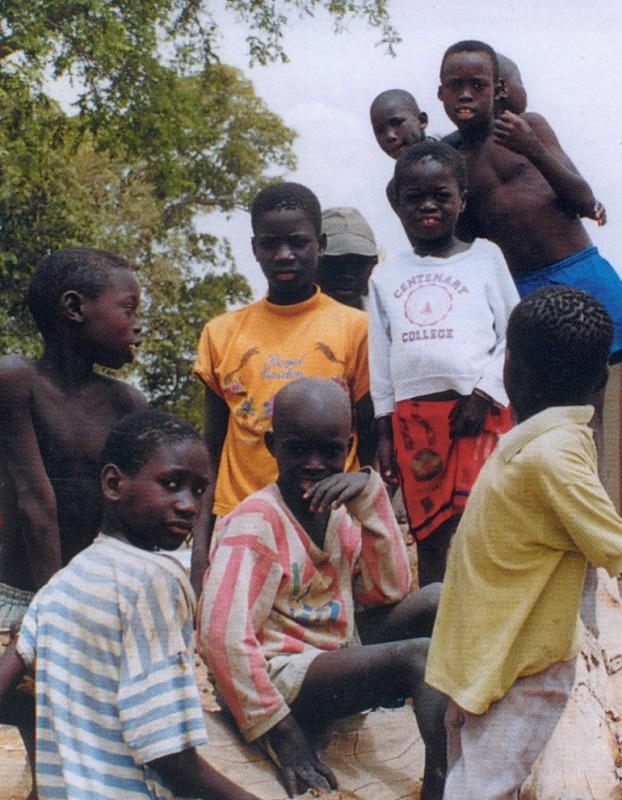
“Famine, war, drought or revolution – but AIDS is more than all of them. They will never touch society the same way that AIDS has,” says Father Owen Lambert. A priest with the Holy Ghost order, he has been a long-time resident of Ethiopia and has the stark statistics of the virus and its impact in Africaat his fingertips. “There are up to 600 deaths a day in Ethiopia alone,” he says. “Some 60 percent of Ethiopian adults between 15 and 49 will be dead in 2015, according to a study by the renowned African Medical Institute and Jimma Health Centre.”
Short life
Adulthood starts young in Africa and the prospects are catastrophic with an average life expectancy of 49 years. When the Mengistru regime in Ethiopia was ousted, his army of between 400,000 soldiers was disbanded, with some 42 percent of them HIV-positive. Across race and social class, the virus “is really hitting at the core of the society, its leaders, its breadwinners”.
Prevention through education
Father Lambert, who divides his time between Ireland and east Africa, wants to establish an AIDS Partnership for Africa to help countries like Ethiopia “to deal with the huge levels of death and what will remain and to help people develop coping mechanisms”.
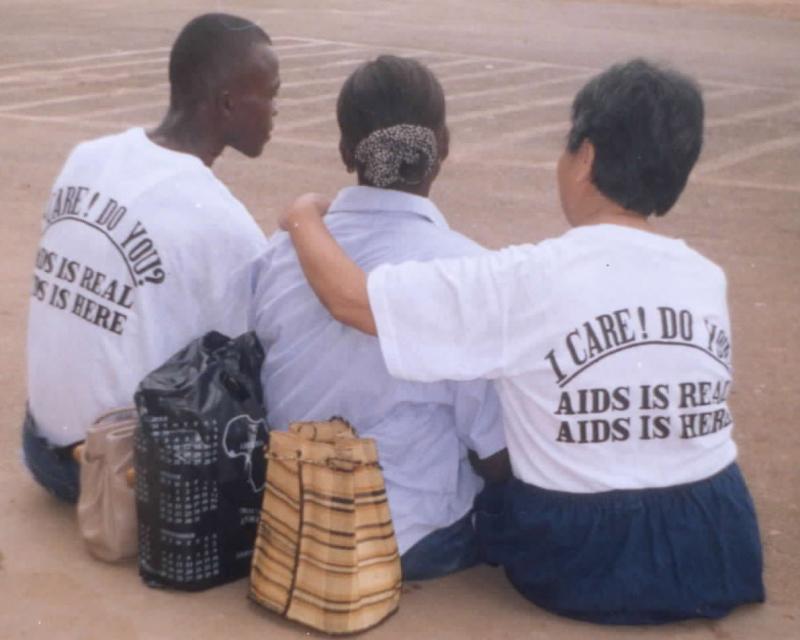
Progressive danger
The Holy Ghost priest facilitates existing efforts to deal with the crisis and starting new AIDS programmes. He is involved with the Italian Agency CVM, which has made significant progress in dealing with AIDS in the northwest of Ethiopia. CVM, which receives substantial funding from a number of agencies including Ireland Aid, started in the city of Bahir Dar and now operates in a region covering 10 million people, including street children. There are already 5,000 street children in Bahir Dar with a population of about 10,000, and the number is steadily growing as their parents die from AIDS.
There is a phenomenon where older men rape virgins in the belief that it will cure them of AIDS. Ateteb Gashaw (10) looks after her three-year old sister, after both her parents died from AIDS, and begs on the street. She was one of the victims.
AIDS warfare
The Christian, Orthodox and Islamic communities in Ethiopia have been instrumental in reducing the stigma of AIDS. They are encouraging tolerance and campaigning on the issue. Some 600 Orthodox priests have been trained as counselors and many will bathe and prepare a corpse for burial as part of the efforts to reduce fears.
Often the men go to the city to work and when they return home months later, “a lot of women have insisted that their husbands be tested before being readmitted into their home”. It is a sign of progress.
* * *
Change your behavior: a teaching drama
The message is blunt, direct and in dramatic form. Free shows in schools, market places and wherever people meet tells a story with the anti-AIDS warning: change your behavior.
The tale is of a father and a son, living in the same home. Unbeknownst to each other, both of them are sleeping with the maid.
The son is a “man about town”, with three or four girlfriends. One of his girlfriends hasn’t slept with him. He proposes marriage and then pleads, according to a translation of the drama, “We have been in love for the last two weeks, why don’t we have sex?”
She responds, “We are in the modern society, we don’t have sex before marriage and we have to be screened for HIV before marriage.” So the son gets screened and turns out to be HIV-positive. He confesses to the father: “I have committed sex with many girls, including the servant. So please forgive me, I have done wrong.”
“You have AIDS and you slept with our servant,” says the father, who collapses. He realized he probably is HIV-positive as well. The maid, in the background, hears the revelations and realizes that she, too, is most likely positive. It is a disaster. They are all HIV-positive.
But the message at the end of the drama is “Having HIV doesn’t mean the end of life. You can live if you take care of yourself. We have to tell others and teach them to change their ways.”
Dramatic presentation is one of the most effective ways of getting a message across in an area where 70% of the population is illiterate. The message reflects “The Dawn of Hope”, which is also the name of an organization of the people in the Ethiopian city of Bahir Dar, who are living with HIV/AIDS.
There Is Much To Be Done
By Judge Ma. Nimfa Penaco-Sitaca
Taught for 18 years by Columban Fathers, Sisters and dedicated teachers at the ImmaculateConception College in Ozamiz City, Nimfa always believed in returning to God the blessings she has received from Him. As a member of the Legion of Mary and Couples for Christ, it has been her joy to bring Jesus and Mary to others and to speak of the wonderful things that God does for her.
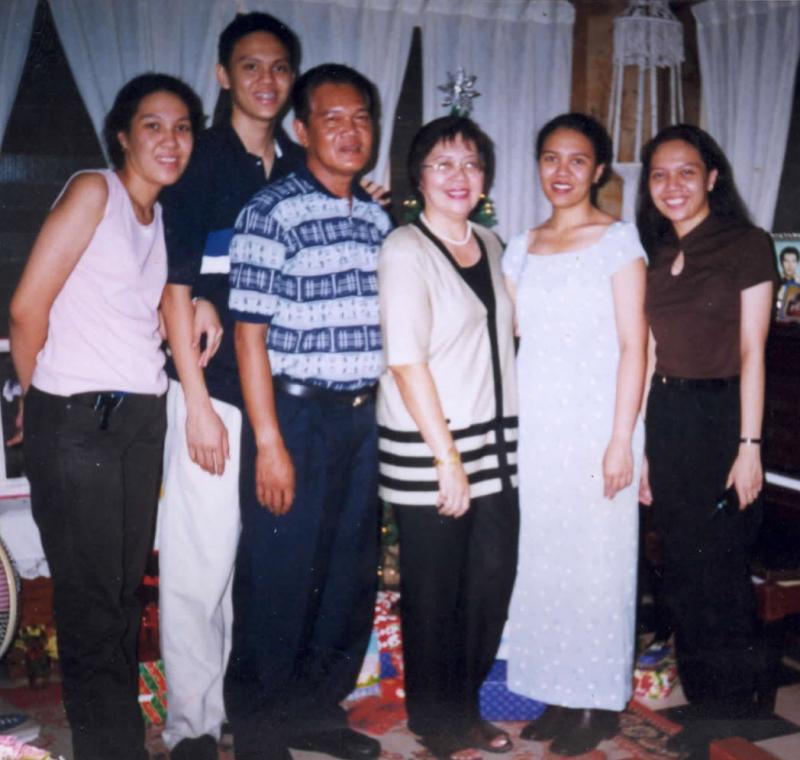
A Legionary since I was 12, I cannot remember being idle on weekends. I can still see myself trudging up and down the streets with my Legion partner, rain or shine. Every Saturday, we went in search of children we could bring to Sunday Mass. We knocked on doors and asked parents to entrust their children to us. We picked their children up on Sunday mornings and marched them off to and from the church. We brought in young and not so young children for Baptism and older children for Confirmation and First Communion. We encouraged parents and their families to hear Mass every Sunday, go to confession regularly and say the rosary every night. We cleaned the church sacristy, kept a flower garden at the convent ground and sold the Sentinel, a Catholic newsletter. During the summer, we gathered children in the neighborhood for catechism.
Legionary warrior
As we grew older, our responsibilities became bigger. We sought for civilly married and live-in couples and persuaded them to get married in the church. We visited the sick, trained junior Legionaries and gave adult catechism.
Lost and found
After college, however, things changed. I left home to work in the city and went to night school at the same time. I was not able to continue my work in the Legion. But Mary would not let me be. She stood by me and waited till I was good and ready to take on my duties again. After nine years, I was now ready.
Forty years after I attended my first Legion of Mary meeting, I find one thing that I am really proud of today – I am a Legionary, called, chosen and commissioned by Mary to bring her and her Son to others; that I have remained a Legionary, and able to perform my Legionary duties despite the pressure and demands of my profession and my work as a wife, mother, daughter, teacher. This is not a mystery to me but is very much a miracle.
Catechist for life
Fr. Kevin McHugh, who, in my college days, supervised the work of Immaculate Conception Collegecatechists in the public schools, would be glad to know that the seed he planted in my heart has grown into a tree, which continues to bear fruit. Today, I remain a catechist, spending my lunch hour four times a week at a public high school. Sometimes my spirit flags, not knowing whether I am able to touch base and reach the hearts of children living in an increasingly irreligious world. But I am encouraged to continue when a parent tells me how her daughter echoes the lessons she learns in my class to her sisters and brothers, or when a priest tells me how amazed he was that his altar boy would refuse to accompany him to fiestas because he does not want to miss his catechism class with me.
Always on duty
My profession gives me so many opportunities for Legionary service. As an executive judge tasked with jail inspection, I get to talk and listen to jail inmates and see to their needs. As a law professor, I get to recruit many of my students to Couples for Christ and Singles for Christ and arrange their retreats prior to their graduation. I also give crash course on Christian marriage. These opportunities to bring God and Mary to others stretch out endlessly and I can truly understand what the Legion handbook says about “being in a sense always on duty”.
Their footsteps after mine
Today, my eldest daughter’s life revolves around Ligaya ng Panginoon. My second daughter faithfully shepherds her friends and classmates to Bible and Catholic doctrine studies at her school’s campus ministry. As a medical student she is assigned to take care of the health needs of one family referred to as “urban poor”, but she always walks extra miles, caring for two or three families. My only boy is active in Christ’s Youth in Action, finding much satisfaction in doing, among others, the laundry in a home for the aged in Tondo. Although my third daughter still resists the call to work in God’s vineyard, I know that God is at work in her and that in His time, she will yield, just as my husband did. Initially, my husband didn’t want to join Couples for Christ, but it didn’t take long for God to touch him and today he is a committed member of its medical mission team.
I dream of my husband and I, with one or two of our children, joining the Columbans in Latin America after early retirement from government service. It is a dream I shall nurse with the wings of prayer. But for now, the reality is here. There is much to be done near and around me and it is for the work that Mary, many years ago, called and prepared me.
There’s Always A Reason To Be Happy
By Gee-Gee O. Torres
The Congregation of the Daughters of Charity came to Korea in 1978. They were invited by Fr. Alexander Lee, known as the father of the hansenites in Korea, to help the many lepers there. Today five Filipino and 12 Korean Sisters continue the work that the first group of Sisters had begun.
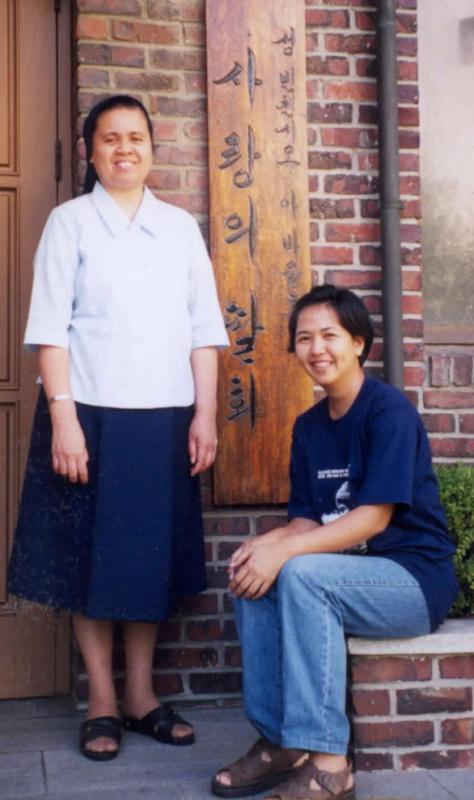
Sr. Ester Cecilia, DC from Bicol arrived in Korea in 1993. She spent her first 18 months studying the Korean language, Hangul. “Learning a new language at the age of 45 was a great challenge for me. But with a very supportive community, I passed my subjects in the language school and now I get along quite well with my Hangul.”
After language school, she began with her new mission assignment as formator. Though she had already been a novice mistress in thePhilippines, Sr. Ester still found her new assignment difficult. “Most of our aspirants are the only Catholic in their family. When they enter our Congregation, they bring with them their own personal and cultural values which we respect. We teach them community values and when we combine these values with their culture and tradition, something beautiful comes out. My work here as a formator is like planting a seed and taking care of it to see it grow into a plant. My joy is seeing our Korean Sisters grow into mature Christians, ready to take on bigger responsibilities. Today one of our Korean Sisters is already the local superior in one of our communities. Slowly they are taking the lead.”
* * *
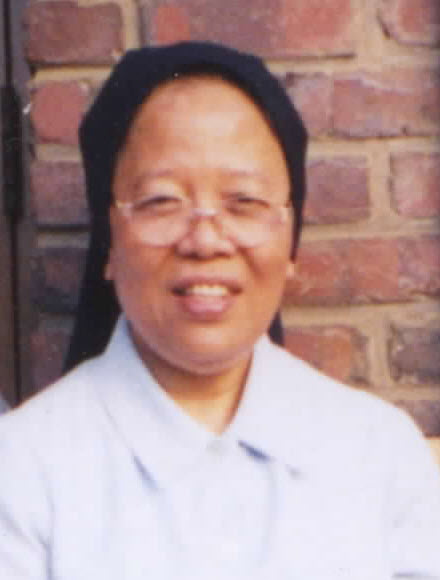
Sr. Francisca Umali from Laguna is the local Superior of the Daughters of Charity Kunpo Community in Korea. She said, “I miss mobile clinics when I was in Negros in the seventies. But mission life here in Korea is a ministry of presence and it has a different kind of challenge.”
To Search is to Find

We do not have the answers to every question – but the very asking of the question is the beginning of the answer. So why don’t you send us your questions and let us together find the answers to our questions.

SIGN OF THE CROSS
When I went to Mass, the priest said that there’s no need to make the sign of the cross right after taking Communion. But my younger sister, after I told her this, reacted and said that making the sign of the cross is an expression of our reverence to God so you cannot tell people not to do it. What can you say about this?
I go along with your younger sister. There are many beautiful things in life, which we are not obliged to do but life would be poorer without them. Surely this is one of them.
GARDEN WEDDINGS
Are garden weddings allowed in the Catholic Church?
A wedding is a very solemn occasion as two people pledge their faithfulness and love to each other for life. The church setting, for me, has the right solemn atmosphere, so I imagine no priest would be quick to encourage an outdoor wedding where appropriate reverence might be lost. Recently, I saw some couple getting married underwater! However, I am sure the rules in the Catholic Church are not so rigid as to NEVER allow such a wedding especially if there was some good reason for it other than sensationalism.
ACCOMPLICE
I knew my married friend was having an affair with a married man. Although I did not approve of this, I promised her not to tell this to anyone and this was our secret for two years. Now everything is gradually beginning to be discovered and my friend and that married man decided to end their affair. Should I confess to a priest for being an accomplice for this crime?
Knowing someone’s secret does not necessarily make you an accomplice. However if you were an active agent encouraging the whole affair, then I suppose you would have some questions of conscience to answer and confession might be appropriate. But does not all this go back to our finding it so difficult to tell a friend the hard truth in any matter? How do we tell a friend we don’t agree with them without them feeling we don’t love them? This is a courageous act well worth cultivating and it will make us a true friend in the long run.
INTERESTING WEDDING
I recall an interesting wedding featured on television – a gay and a lesbian getting married. I am not too sure now if it was a church or a civil wedding. But if it was a church wedding, is it allowed?
That wedding you saw on the TV strikes me a bit as being media sensationalism – something being done for show rather than a solemn contract before God and the Church. For a Catholic wedding they would have to be of the opposite sex but their sexual orientation would be a private matter for themselves.
LEAVING RIGHT AWAY
After the final blessing in the Mass, I notice that most of the people leave the church right away without waiting for the priest to leave the altar first. Is this okay?
Sometimes what causes this is that the final hymn is too long and they are expected to wait right till the end. The last hymn is a recessional and is meant to accompany the ‘going out’ of the priest and people so I don’t mind if the people actually do go out during it though it would be better if the priest led the way.
Then there are always some people who are slipping away fast because they have some important matters at home to look to. The cure, of course, is a really good recessional song, which rivets them to their seats!
CREMATION
Is cremation accepted or approved by the Church?
Yes. Cremation is allowed, “provided it doesn’t demonstrate a denial of faith in the Resurrection of the body”. There was a time when some people interpreted cremation as a sign of non-belief in the Resurrection but that is no longer so. In certain cultures it is the normal way of burying and since sometimes it is needed in order to be able to send a body home for burial or some other practical reason, cremation has been allowed since the Vatican Council II.
ANNULMENT
If my marriage is annulled by the church, can I get married again in church?
Yes.
DYING WITHOUT BAPTISM
What happens if someone dies without having been baptized? Mostly this happens with newly born babies.
In the case of the newborn who dies, the great mercy of God “who desires that all human beings be saved” and Jesus’ tenderness towards children which caused Him to say: “Let the children come to me, do not hinder them”, allows us to hope that there is a way of salvation for children who have died without baptism. (see Catechism of Catholic Church #1261)
Good people who die without baptism: “Every one who is ignorant of the Gospel of Christ and of His Church but seeks the truth and does the will of God in accordance with his understanding of it, can be saved. It may be supposed that such persons would have desired Baptism explicitly if they had known its necessity.” “God has bound salvation to the sacrament of Baptism, but He himself is not bound by His sacraments.” (see Catechism of Catholic Church # 1257/1260)